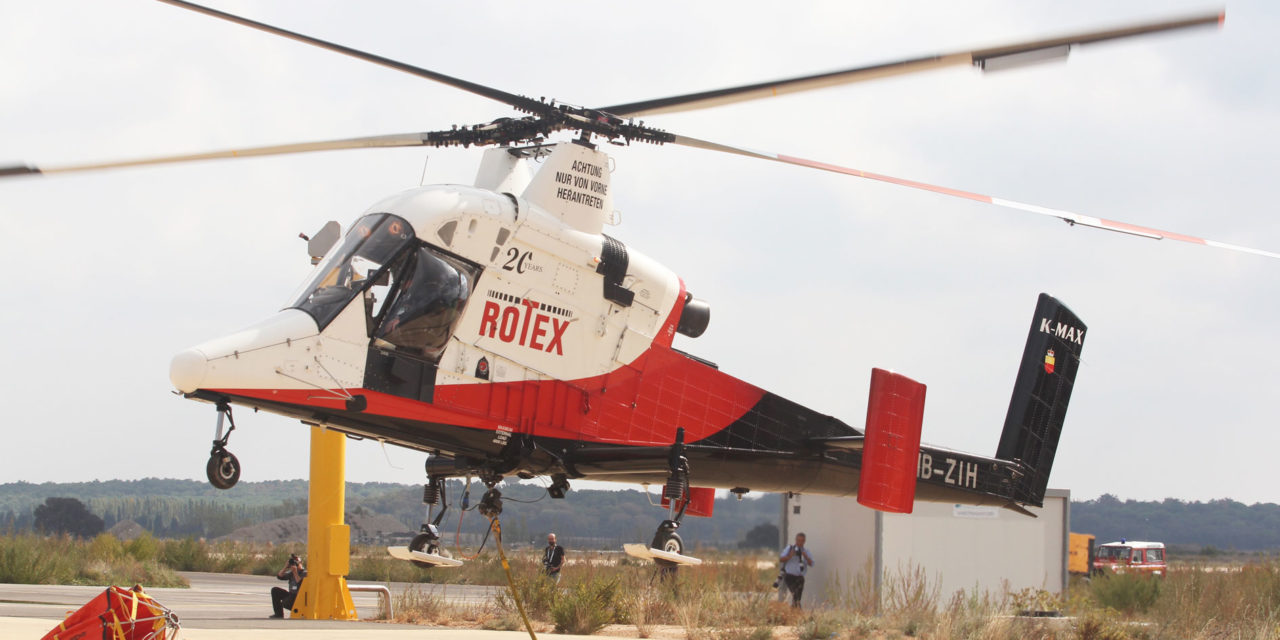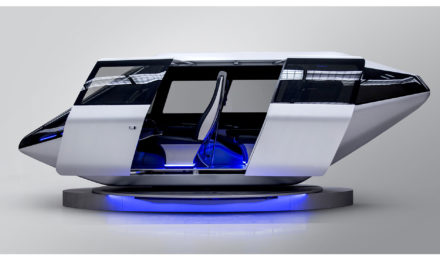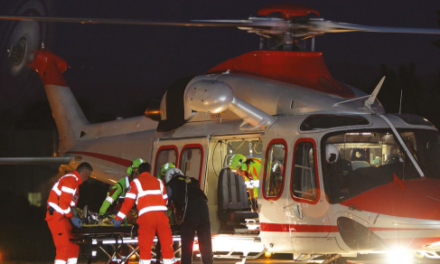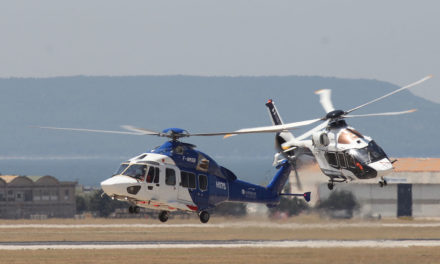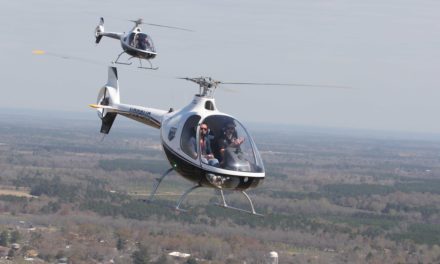The Civil Defense Air Base (BASC) in Nîmes hosted two trade shows October 16-20, 2017: Aerial Firefighting Europe and Search & Rescue International, both organized by Tangent Link. The events were particularly relevant given recent natural disasters—which have revealed what a crucial role helicopters play in such situations.
Following the departure of the French Navy’s maritime patrol units, the Nîmes Garons airport refocused on the commercial sector, before being elected as the new home base for French Civil Defense, which had already chosen to set up its command base, maintenance center, and training center for helicopter personnel there. In March 2017, the unit finalized the move by transferring its airplane activities from Marseille to Nîmes as well. The airport is now the permanent home of 12 Canadair CL-415s, nine S-2F Trackers, three Beech 200 King Airs and two Bombardier Dash-8 Q400s. Spacious, modern infrastructure arrived alongside the airplanes. With its new buildings, welcoming hangars, proximity to the ocean and training areas, low commercial air traffic, and easy access by major highways, Nîmes Garons airport was an easy choice for Tangent Link when it was looking for a venue for a new firefighting tradeshow. Aerial Firefighting Europe will take place in odd years, with its American counterpart hosting in even years, in Sacramento, California. In 2017, it attracted about 40 companies from all over the globe. For its first edition, the show offered a broad look at the sector, from surveillance and firefighting equipment to services, drones, planes and helicopters. The exhibitors, 350 delegates from 30 countries, visitors and journalists all underscored how easy it was to approach the many decision-makers present, and how fruitful their discussions were.
Aerial Firefighting Europe opened with a keynote address delivered by Christos Stylianides, European Commissioner for Humanitarian Aid and Crisis Management, who was visiting the BASC base in Nîmes for the third time. Speaking just as devastating, fatal fires blazed through Spain and Portugal, the Commissioner highlighted the importance of developing a unified response and flawless coordination in Europe when it comes to natural disasters, particularly forest fires, which are “shared challenges” that do not heed national borders. “Sharing our knowledge, pooling our abilities, and exchanging about our experiences is crucial,” he explained.
In addition to conferences and B2B meetings, the trade show also put on air shows, notably featuring three firefighting helicopters. Each of the three had a different approach to air work.
The AS350 B3 by Chamonix Mont Blanc Hélicoptères (CMBH) opened the show with an impressive demonstration of its precision and speed. Capitalizing on the versatility and maneuverability of the aircraft, the pilot ran threw a series of exercises in just a few minutes, revealing the scope of possibilities afforded by the helicopter and its ability to quickly change tasks. It dumped water, transported firefighters, and hoisted equipment in a sling as if building a temporary base of operations. A Bell 212 registered in Luxembourg was up next. It was operated by Héli Protection, which used the helicopter in France in 2017. The twin-engine with its large two-blade rotor is always impressive, for both the ears and eyes. The Bell went about its work with a ventral reservoir filled via a pump and a hose. To impress spectators and show how little water was needed with this setup, the helicopter pumped it out of a very small container—a blow-up children’s pool less than three meters in diameter with water just a few decimeters deep! The third, much awaited, participant was a Kaman K-Max operated by Swiss company Rotex, which owns three and uses them for tree trimming and sling transportation in mountainous regions. With its two intermeshing rotors, the K-Max is always fascinating to watch and to listen to, given how quiet it is. The K-Max does not come with the agility and versatility of the Squirrel B3, but its optimization and load-carrying ability—up to 2,500 kilos in a sling—are impressive.
During a one-day pause, the hangar that hosted Aerial Firefighting Europe was set up anew to welcome the Search & Rescue International exhibitors. There were fewer visitors and exhibitors, but the numbers were more than respectable with 250 participants from different Civil Defense units, NGOs, coast guard units, private operators and more. Search & Rescue International was only launched recently, but it clearly fulfils a need in this sector, whose economic importance will undoubtedly continue to grow over the coming years. The presence of two industry heavyweights—in both the literal and figurative sense—is proof of this trend. The Sikorsky S-92 flown by the UK Coast Guard made the trip from Stornoway, in northern Scotland, and was joined by Héli Union’s EC225. The French operator, which currently owns 33 different aircraft, attended the vent in Nîmes to present the H225 in SAR configuration to potential customers.
The City of Nîmes boosts its international position as a civil defense hub
Elected officials in and around Nîmes, which has a population of 140,000 and is famous for its Roman ruins, are doing their best to turn their city and its airport into a European civil defense hub. And, in fact, the future European SAR and firefighting base already exists—at least virtually. It is known as “BaseCamp” and is featured in a promotional film produced by the Nîmes conurbation development agency. It’s an ambitious project spread out over 650 hectares designed to become a real center of excellence focused on these issues. The 650 hectares include the current Civil Defense rotorcraft and fixed-wing aircraft bases, as well as a long list of potential additions: companies present in the sector, a 12,000 sq-m start-up incubator, research laboratories, training centers, an accommodations area dubbed “Wake Up,” a training area for airtankers, testing areas for new technologies, such as drones, and much more. This very ambitious project aims to make Nîmes a European benchmark in civil defense—and the has made it clear it would be proud to welcome a future European Humanitarian Aid and Civil Defense Agency.
By Frédéric Lert
@photos by F. Lert

